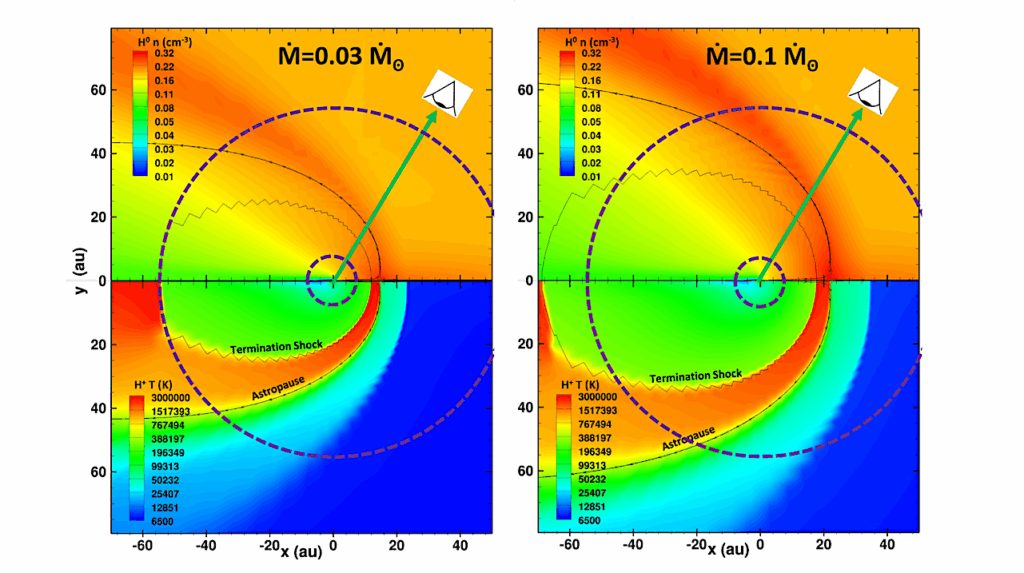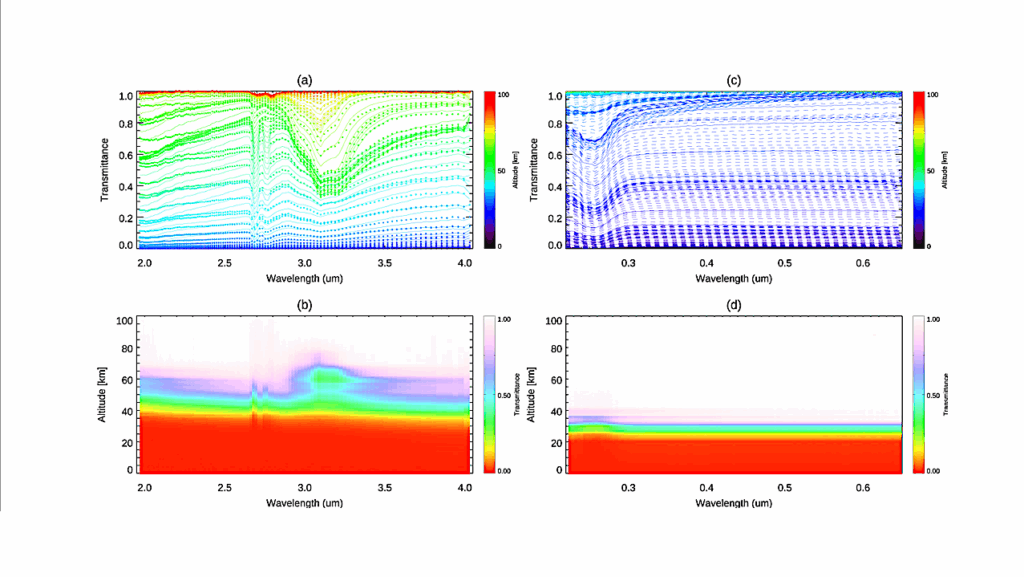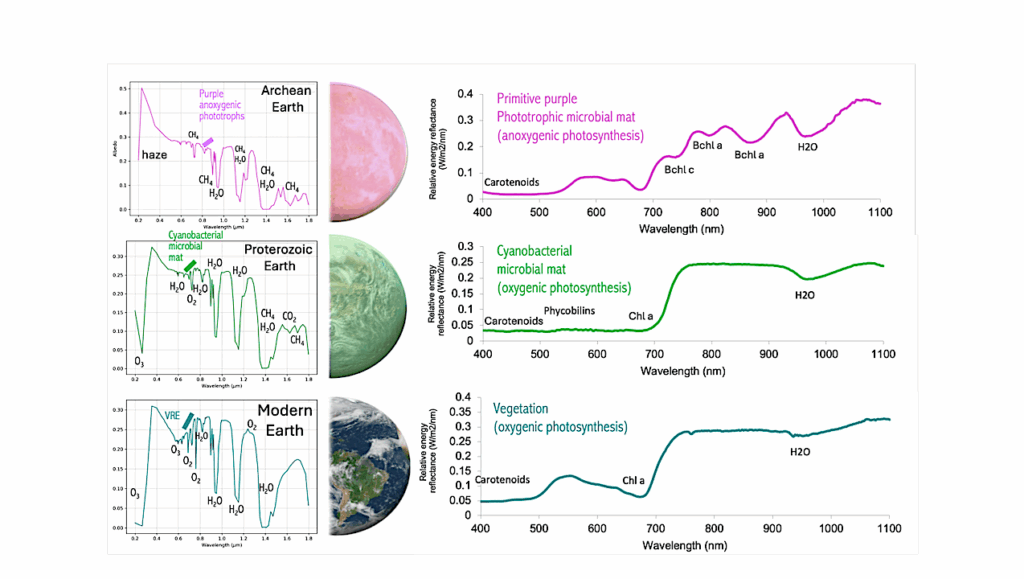Traces of Exomoons in Computed Flux and Polarization Phase curves of Starlight Reflected by Exoplanets

Moons are suspected to influence rocky exoplanet habitability, and gaseous exoplanets in stellar habitable zones could harbour abundant and diverse moons to target in the search for extraterrestrial habitats.
Detecting moons around exoplanets is a major goal of current and future observatories.
Exomoons will contribute to exoplanetary signals but are virtually undetectable with current methods. Aims: We identify and analyse traces of exomoons in the temporal variation of total and polarised fluxes of starlight reflected by an Earth-like exoplanet and its spatially unresolved moon across all phase angles, with both orbits viewed in an edge-on geometry.
Methods: We compute the total and linearly polarised fluxes, and the degree of linear polarization P of starlight that is reflected by the exoplanet with its moon along their orbits, accounting for the temporal variation of the visibility of the planetary and lunar disks, and including effects of mutual transits and mutual eclipses. Our computations pertain to a wavelength of 450 nm.
Results: Total flux F shows regular dips due to planetary and lunar transits and eclipses. Polarization P shows regular peaks due to planetary transits and lunar eclipses, and P can increase and/or slightly decrease during lunar transits and planetary eclipses. Changes in F and P will depend on the radii of the planet and moon, on their reflective properties, and their orbits, and are about one magnitude smaller than the smooth background signals. The typical duration of a transit or an eclipse is a few hours. Conclusions: Traces of an exomoon due to planetary and lunar transits and eclipses show up in F and P of sunlight reflected by planet-moon systems and could be searched for in exoplanet flux and/or polarisation phase functions.
Javier Berzosa Molina, Loic Rossi, Daphne M. Stam
(Submitted on 26 Jul 2018)
Comments: Accepted for publication in Astronomy & Astrophysics
Subjects: Earth and Planetary Astrophysics (astro-ph.EP)
Cite as: arXiv:1807.10266 [astro-ph.EP] (or arXiv:1807.10266v1 [astro-ph.EP] for this version)
Submission history
From: Daphne Stam
[v1] Thu, 26 Jul 2018 17:52:46 GMT (2652kb,D)
https://arxiv.org/abs/1807.10266
Astrobiology








